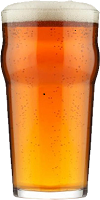Cold IPA: The Coolest Kid on the Block
Cold IPA: A Brief History and Description
The Cold India Pale Ale (Cold IPA or CIPA) is a style of beer that was developed by Kevin Davey from Wayfinder Beer in Portland, Oregon. The history of the CIPA is relatively recent. There is currently no agreed upon style guidelines by any of the major critics, so this does make it difficult to pin down objective criteria.
A CIPA should include a simple grain bill, predominant American hops, dry-hopping during fermentation, and either a lager yeast or a hybrid of lager and ale. No matter what combination of clean malts a brewer uses, no caramel malts should find their way into the grist of a CIPA. According to Lauren Hughes from Necromancer Brewing in Pittsburgh, PA:
“Caramel malts give you some residual sugar that gives sweetness that pulls away from showcasing the hops. For a Cold IPA, what you’re trying to do is get a medium bready malt base that’s not overwhelmed by the hops but complementing the hops.”
CIPAs should feature newer hop varieties, avoiding the earthy-spicy notes of old world varieties. It is important to balance between a bold West Coast IPA hop profile and the “juicy” traits of modern IPAs. Hops such as Columbus, Chinook, El Dorado, and Motueka contribute everything from pine and citrus to tropical fruit and even hints of watermelon.
Yeast Options for Cold IPAs
When choosing a yeast for your CIPA, it is important that the strain does not produce high sulfur or high esters. It should be fermented warm if a lager strain and cold if an ale strain. You may also pitch a combination of both styles. It is important to look out for fruity esters as well as complex alcohol aromas and flavors at low levels. Although the CIPA’s primary goal is to display hops, there are several lager strains suitable for the CIPA. The yeast is what will give a CIPA is characteristic cold, clean, and dry body.
Among these top-shelf lager strains are the legendary 3470 and Augustiner. The original lager from the German Hefebank, 3470 ferments clean and malty with rich residual maltiness. 3470 is also characterized by having a lower temperature range for fermentation. Augustiner offers low diacetyl and sulfur production, making it ideal for a CIPA. Finally, a more unique choice would be W177 Kolsch. This classic strain features a light fruity or “estery” taste, lower Amyl-alcohol content, and most importantly for a CIPA; this yeast strain can be fermented with high or low temperatures.
Written by: David Pritchard, BSI Microtechnologist
Sources:
https://sierranevada.com/blog/what-is-a-cold-ipa/
https://www.wayfinder.beer/cold-ipa
https://www.brewersassociation.org/edu/brewers-association-beer-style-guidelines/
https://newschoolbeer.com/home/2021/2/what-is-a-cold-ipa-wayfinder-kevin-davey-definition


